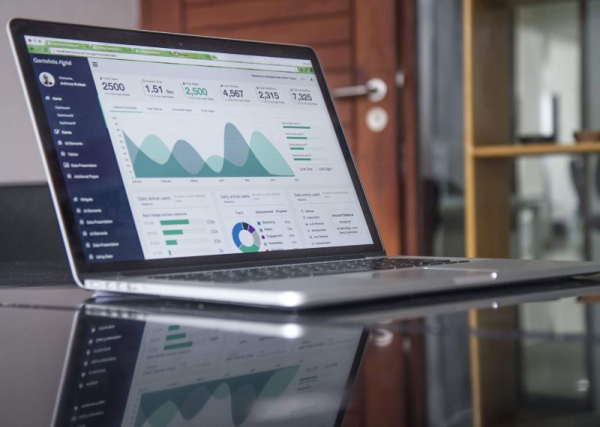
Site Performance Monitoring

In today's digital landscape, having a fast and reliable website is crucial for businesses and individuals alike. A well-performing site not only enhances user experience but also boosts search engine rankings, ultimately leading to increased conversions and success. In this section, we'll introduce the importance of site performance monitoring, and touch on three key aspects: website uptime, server and web application monitoring, and real-time website monitoring.
Imagine your website as a brick-and-mortar store. If it's closed or inaccessible, customers can't make purchases, which directly impacts your bottom line. In the same way, if your website is down or slow, visitors are likely to leave, and potential customers may choose to do business elsewhere. This is why site performance monitoring is essential - it helps ensure your website is available, fast, and functioning properly.
A. Importance of site performance monitoring
Site performance monitoring allows you to identify and resolve issues before they become critical, improving user experience and ultimately, your bottom line. Here are a few reasons why monitoring is essential:
- Enhanced user experience: A well-performing website is more likely to engage and retain visitors, increasing the likelihood of conversions and return visits.
- Improved search engine ranking: Search engines like Google prioritize fast, reliable websites in their search results, helping you attract more organic traffic.
- Proactive issue resolution: Monitoring helps you detect problems early, allowing you to resolve them before they escalate and negatively impact your site's performance or reputation.
B. Overview of key site performance monitoring aspects
There are three primary aspects to site performance monitoring that you need to be aware of:
- Website uptime: Ensuring your website is always accessible to visitors is crucial. Monitoring your site's uptime helps you quickly identify and resolve issues that can cause downtime.
- Server and web application monitoring: Your site's performance relies heavily on the health of your server and the applications running on it. Monitoring these components helps you identify and troubleshoot issues before they negatively impact your website.
- Real-time website monitoring: Keeping an eye on your website's performance in real-time allows you to address potential issues proactively, ensuring your site remains fast and reliable for users.
In the following sections, we'll explore each of these aspects in greater detail and provide practical tips for optimizing your site's performance.
Navigating the World of Website Uptime Monitoring
In this digital age, having a website that's accessible around the clock is a top priority for businesses and individuals alike. Website uptime monitoring allows you to ensure your site remains available to visitors and helps you address any issues that could lead to downtime. In this section, we'll delve into the importance of uptime monitoring and discuss strategies for maintaining website availability, including implementing downtime alerts and utilizing website availability checkers.
Think of your website as a storefront in a busy shopping district. If your store's doors are locked, potential customers won't be able to enter and make purchases, ultimately affecting your sales and reputation. Similarly, if your website is down or inaccessible, visitors will leave, and you'll miss out on potential sales, leads, or engagement. By closely monitoring website uptime, you can quickly identify and resolve issues, ensuring your site remains available and your online presence stays strong.
Measuring Individual Page Performance
Optimizing individual page performance is essential for delivering an exceptional user experience and ensuring your website ranks well in search engine results. In this section, we'll focus on the importance of measuring page load times and core web vitals, and discuss how you can use this data to improve your site's performance.
Imagine your website is like an art gallery, with each page representing a different exhibit. To provide an enjoyable experience for visitors, you must ensure each exhibit is well-lit, easy to navigate, and visually appealing. In the same way, monitoring the performance of each page on your website helps you identify areas for improvement and deliver a seamless, enjoyable experience for your users.
A. Measuring individual page load times
Page load times are a critical factor in user experience and search engine optimization. Slow-loading pages can lead to increased bounce rates, reduced conversions, and lower search engine rankings. To optimize your site's performance, it's crucial to measure and improve individual page load times.
Example: Tools like WebPageTest and Pingdom Website Speed Test allow you to measure page load times and identify performance bottlenecks, providing actionable insights to help you optimize your site's speed.
B. Understanding Core Web Vitals
Core Web Vitals are a set of metrics introduced by Google to measure the quality of user experience on a web page. They include:
- Largest Contentful Paint (LCP): Measures the time it takes for the largest piece of content on a page to load.
- First Input Delay (FID): Quantifies the time it takes for a page to become responsive to user input.
- Cumulative Layout Shift (CLS): Captures the visual stability of a page by measuring unexpected layout shifts.
Google uses Core Web Vitals as a ranking factor, so it's essential to monitor and optimize these metrics for each page on your website.
Example: Google PageSpeed Insights and Google Search Console are two valuable tools that provide insights into your site's Core Web Vitals, allowing you to identify and address performance issues.
C. Using data to improve page performance
By collecting data on individual page load times and Core Web Vitals, you can make informed decisions to improve your site's performance, leading to better user experience and higher search engine rankings.
Example: Based on the data gathered from performance monitoring tools, you might decide to compress images, eliminate render-blocking resources, or implement lazy loading to enhance your site's speed and overall performance.
Monitoring and optimizing individual page performance is crucial for delivering a top-notch user experience and ensuring your website ranks well in search engine results. By focusing on page load times and Core Web Vitals, you can make data-driven improvements that will boost your site's performance and set you up for online success.
Traffic Analysis and Performance Benchmarking
In the quest for a high-performing website, analyzing web traffic and benchmarking your site's performance against competitors can provide valuable insights for continuous improvement. In this section, we'll discuss the importance of web traffic analysis and performance benchmarking, and explore strategies for leveraging this information to enhance your website's performance.
Think of your website as an athlete competing in a race. To succeed, you must understand your strengths and weaknesses, train strategically, and track your progress against competitors. Similarly, analyzing web traffic and benchmarking your site's performance helps you identify areas for improvement, implement effective strategies, and measure your progress against industry standards.
A. Web traffic analysis tools for data-driven insights
Web traffic analysis tools allow you to collect and analyze data about your site's visitors, helping you understand their behavior, preferences, and the effectiveness of your marketing efforts. By leveraging this data, you can make informed decisions to optimize your site's performance and user experience.
Example: Google Analytics is a popular web traffic analysis tool that provides insights into user behavior, demographics, traffic sources, and much more. You can use this data to identify trends, optimize your site's content, and improve your marketing strategies.
B. The importance of website performance benchmarking
Performance benchmarking involves comparing your site's performance against industry standards or competitors, providing you with valuable insights into how your website stacks up and where you can make improvements.
Example: Tools like PageSpeed Insights allow you to compare your site's performance against competitors, helping you identify areas where you can improve and gain a competitive edge.
C. Strategies for continuous performance improvement
By combining web traffic analysis and performance benchmarking, you can implement data-driven strategies to continuously improve your website's performance, user experience, and search engine rankings.
Example: Based on your traffic analysis and benchmarking data, you might decide to optimize your site's navigation, enhance your content strategy, or focus on improving specific performance metrics like page load times or Core Web Vitals.
Website Performance Is Key
In today's digital world, a high-performing website is crucial for success. By focusing on site performance monitoring, website uptime, server and web application monitoring, real-time website monitoring, individual page performance, and traffic analysis and benchmarking, you can ensure your site is fast, reliable, and optimized for your users.
Remember, the key to online success is continuous improvement, so make use of the monitoring tools and strategies we've discussed to regularly evaluate and enhance your site's performance. As you do so, you'll be better equipped to provide an exceptional user experience, improve your search engine rankings, and set yourself up for long-term success in the digital landscape.